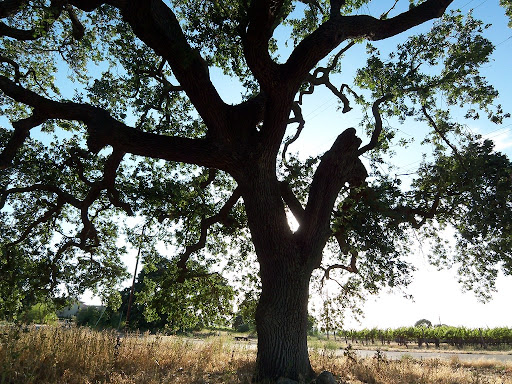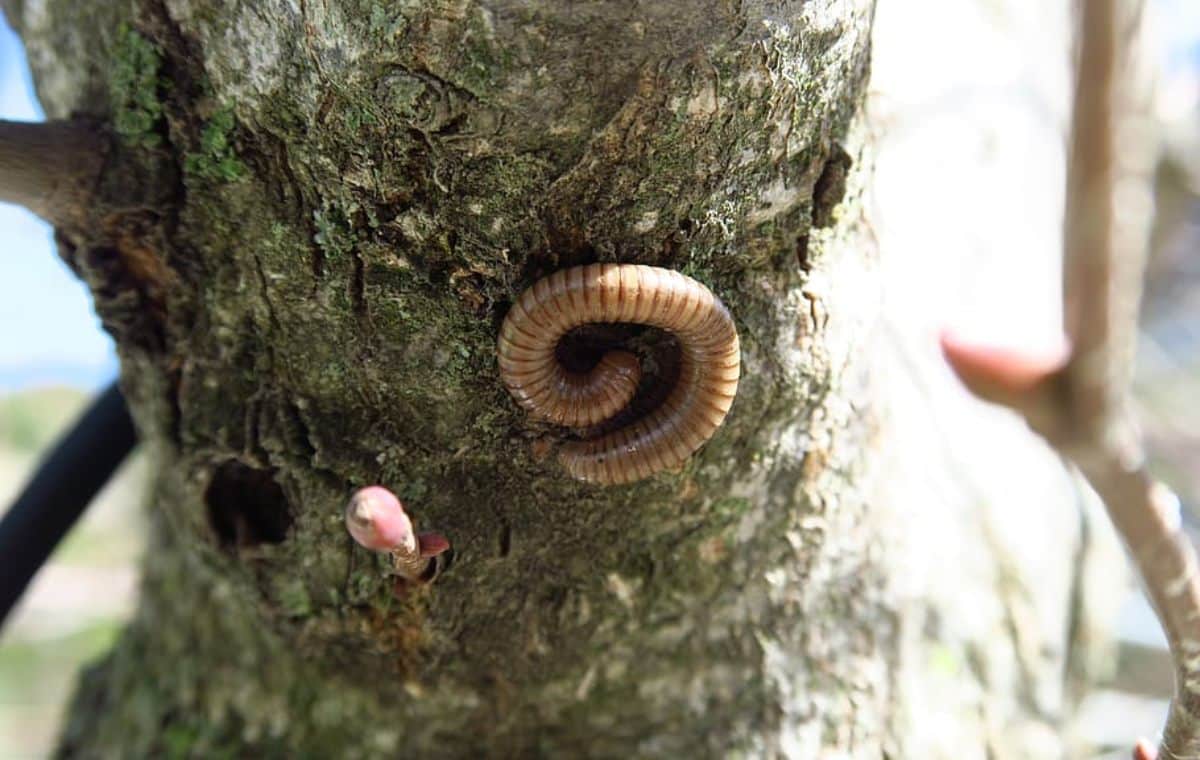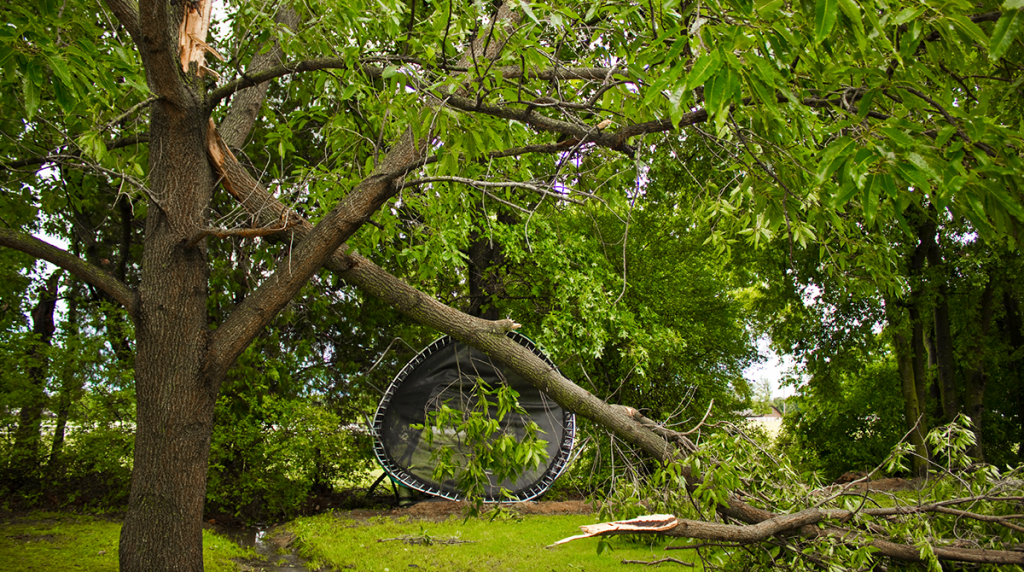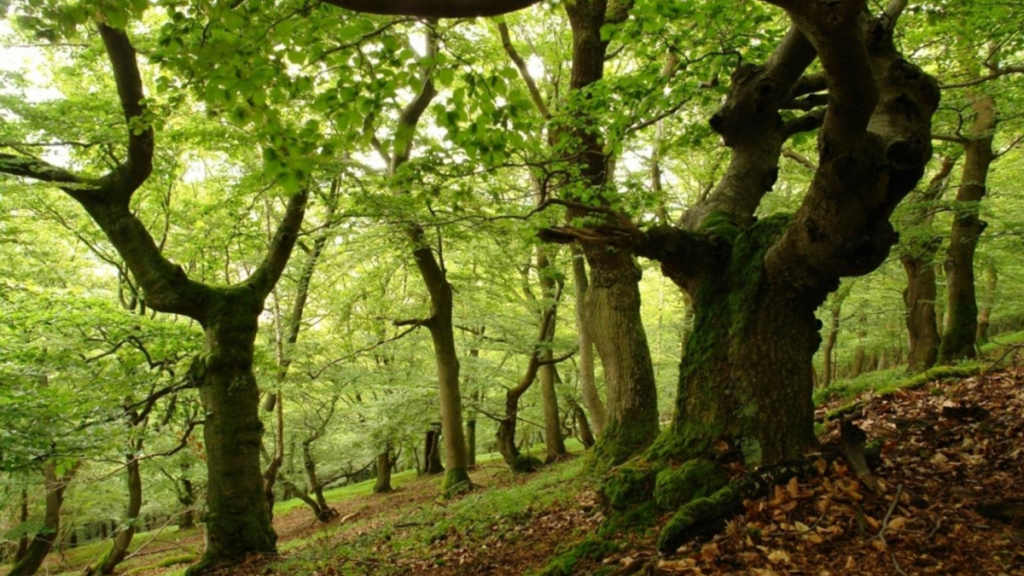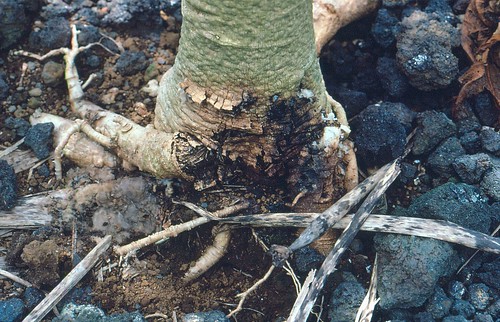
Phytophthora Stem Cankers
Date April 20, 2023
Phytophthora disease is the most prevalent disease of nursery crops across the nation. Phytophthora species can also infect forest trees, vegetable crops, and fruit and nut trees. Because these disease-causing organisms can damage and devastate a variety of vegetation, it’s important for homeowners to understand Phytophthora stem cankers and what to do about them.
What Are Phytophthora Stem Cankers?
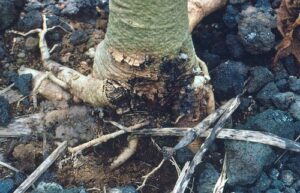
Image via Flickr by Plant pests and diseases
Phytophthora is an organism related to brown algae and diatoms. While they’re sometimes called water molds, unlike their relatives they can exist on land. When Phytophthora species take up residence on a plant, they join together to form stem cankers. These cankers usually occur on the lower parts of the plants, at ground level or below, unlike common stem cankers, which are traditionally higher up. In some cases, such as when a plant has a damaged trunk or lower branches, Phytophthora stem cankers form above ground.
How Do Phytophthora Stem Cankers Impact Plants?
There are several species of Phytophthora. Many of these species, such as Phytophthora syringae, Phytophthora mengei, and Phytophthora ramorum, cause disease. These organisms infect a plant’s inner and outer stem or bark, killing the cambium and phloem that help the plant grow new bark or stem and roots. Diseases associated with Phytophthora include potato late blight, rhododendron root rot, and sudden oak death.
What Are the Signs of Phytophthora Stem Cankers?
Phytophthora stem cankers are visible sections of dark bark that often ooze a black or red-colored resin. This resin usually leaves dark stains on the outer bark. Cutting away the canker from the plant’s surface reveals an orange-to-brown lesion that might have a sweet-smelling, fruitlike scent.
Many plants impacted by Phytophthora stem cankers gradually die. They might lose their leaves, making the canopies of impacted trees seem much thinner. Phytophthora often attacks a plant’s roots. Phytophthora mengei, which typically impacts trees, kills major roots, making it more difficult for the plant to access the nutrients it needs for good health. Phytophthora cinnamomi attacks smaller roots, causing root rot that prevents nutrient uptake. As a plant’s health declines, it might seem to deteriorate rapidly, with its leaves browning very quickly.
Are Phytophthora Stem Cankers Treatable?
Some plants fight off Phytophthora stem cankers on their own, while others will succumb to disease without human intervention. Early treatment gives plants their best chance of survival. Chemical treatments such as fungicides get great results.
It’s also vital to control the spread of Phytophthora stem cankers. As Phytophthora relies on water to complete its life cycle, irrigation management is an essential part of preventing spread. It’s important to keep tree trunks dry and locate sprinklers away from stem cankers. Drip irrigation might be a better choice than using sprinklers. As gardening equipment can spread Phytophthora, it’s important to avoid wounding potentially infected trunks or roots.
As tree specialists, TreeNewal can help homeowners across the DFW area with any tree problem, including Phytophthora stem cankers. TreeNewal’s ISA-cCertified arborists can quickly diagnose tree diseases and disorders and develop treatment plans to give trees their best chance at survival. TreeNewal’s convenient online contact form helps Texas homeowners get the tree help they need in a hurry.
